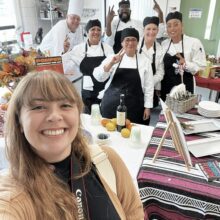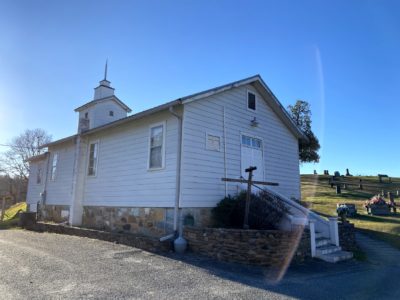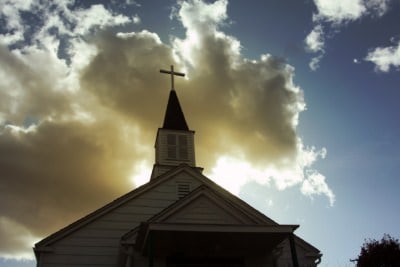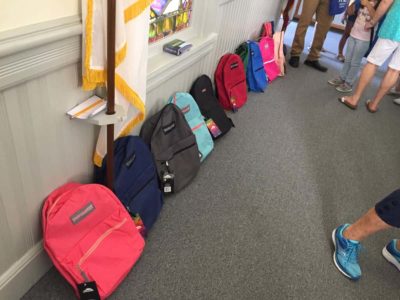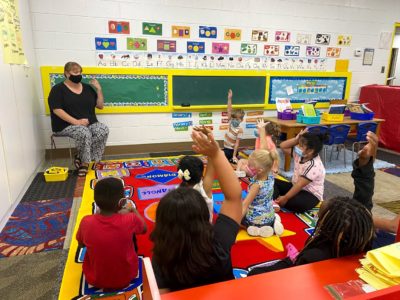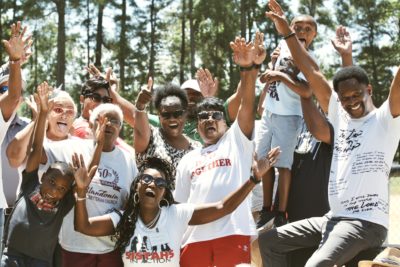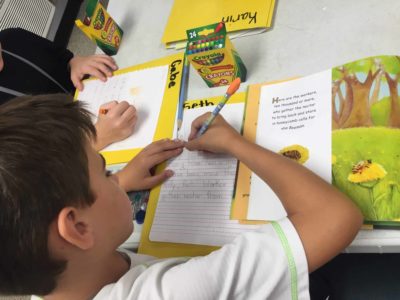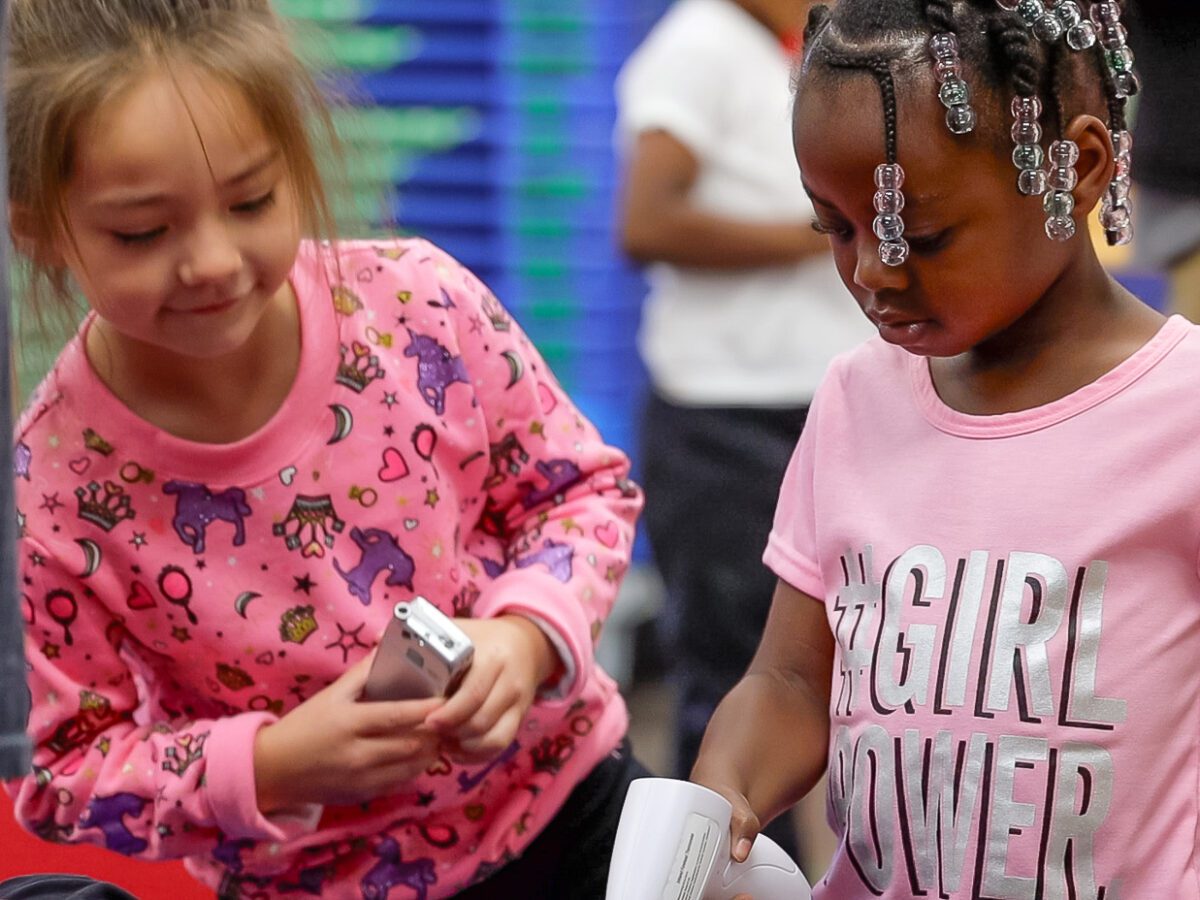
|
|
Across North Carolina, community partnerships with faith groups can play an important role in helping our public schools and students succeed. From school supply drives and afterschool programs to tutoring and affordable building space, churches and houses of worship can offer extra support and resources to their local families and school districts.
As EdNC has previously reported, education and religion both play a big role in people’s lives and decision-making. Across all 100 counties in our state, faith spaces and schools both act as institutional anchors in their communities.
Schools and colleges provide learning, jobs, and community. In 49 of the state’s 100 counties, an entity providing “educational services” is the top employer, EdNC previously reported, and in 46 of those counties, it is the public school system filling that role. Schools like Clinton High School provide food pantries for students; schools in western North Carolina provided mental health support for students and staff once schools could safely open after Hurricane Helene.
Places of worship also help support families and students — like one Elizabeth City church that housed a summer literacy camp, Morganton churches that worked together to support Latina youth, and faith spaces that support communities following hurricanes and other natural disasters — even by helping provide clean water.
“The alignment is just so strong,” Central Carolina Community College’s Meghan Brown — vice president of advancement, operations, and government relations — said of the college’s work with local faith leaders. “And we can imagine possibilities much bigger than we would have been able to without each other.”
If you are a local faith group or local school or district looking to build more partnerships in your community, this toolkit is for you. Read below for a guide to what you need to know about the First Amendment, along with other best practices for faith-based collaborations for public schools, their students, and their communities.
The First Amendment
The First Amendment to the United States Constitution protects many important freedoms, including the freedom to religion.
“Congress shall make no law respecting an establishment of religion, or prohibiting the free exercise thereof…”
First Amendment concerning religion
There are two ideas that protect the freedom of religion, known as the establishment clause and the free exercise clause. While the free exercise clause was designed to protect an individual’s freedom of religion, the establishment clause was designed to protect the separation of church and state. This means the government can’t endorse or promote certain religions over others.
Public schools, which received funding from federal and state governments, must ensure both clauses are protected.
Historically, the freedom of religion has often been tested in public schools. Generally, the Supreme Court’s precedent is that students and teachers are free to practice and express their religion individually as they see fit, but they are not allowed to lead any state-sponsored religious practice.
This has been interpreted to mean that while teachers, for example, can pray privately throughout the day, they can not lead their students in prayer. However, a student-led prayer or religious group can take place on campus, precisely because it is student-led. A 2019 Pew survey of American teens shows some forms of religious expression are relatively common in public schools, including student prayer before sporting events, and students wearing clothing or jewelry with religious symbols.
As more states are testing the limits around religion in public schools, it remains to be seen how the current Supreme Court will interpret freedom of religion protections concerning public schools.
“The Supreme Court has addressed innumerable First Amendment cases about religion and our public schools,” a Find Law article says. “The Court’s interpretation of our First Amendment rights in this environment has also shifted over time. It has been moving increasingly toward accommodating religion. Time will tell if this trend continues.”
However, upholding the First Amendment is not just about legal compliance, school and community leaders told EdNC. It is also about providing a safe environment for all students to show up and learn.
In North Carolina, about 77% of adults identify as Christians, according to the Pew Research Center’s Religious Landscape Study. That’s compared to 70.6% of adults nationally. Religious North Carolinians of non-Christian faiths make up 3% of the state; 1% are Jewish and less than 1% are Muslim, Buddhist, or Hindu. Fifteen percent identify with no religion in particular, 3% are agnostic, and 2% are atheist.
With more than 10.5 million people living in North Carolina, according to the Census, even 1% of the population is more than 105,500 people — 77% is more than 8,000,000. That’s a lot of people of faith, among them our teachers and students.
Interfaith collaboration
In light of the religious diversity of North Carolina, faith-based partnerships should be as interfaith and nondenominational as possible, according to education and community leaders across the state.
“I always start from the position of, if there are going to be partnerships, especially if they’re going to be more broadly based, that they need to respect people’s individual religious choices,” said Rabbi Andy Koren, senior rabbi at Temple Emanuel in Greensboro. “In other words, no proselytizing — it’s almost like commandment number one of these partnerships.”
Many religious groups want people to join their faith or house of worship, Koren said, which is not a negative thing in of itself. However, if faith groups want to provide educational opportunities and resources primarily as a way of converting people, he said they probably are not the right fit for a partnership with public schools.
“Because we are a minority group in the United States, I think we become particularly sensitive to that,” Koren said.
However, Koren said individual clergy members can provide school administrators with importance perspectives regarding the religious life of their students.
For him, that has meant serving as a resource on antisemitism for leaders at Guilford County Schools, or helping ensure that graduation schedules don’t majorly conflict with the Jewish calendar.
“Graduation usually happens during the time of the year where we have one of those festivals on the Jewish calendar that is really easy to gloss over,” he said. “And so, I’ll be on the phone with the district like a year in advance, saying, ‘Okay, for these particular schools, where you have Jewish concentrations, you’re not going to want to plan graduation for then.'”
Sometimes, Koren also invites school officials to visit his congregation, like when a new superintendent starts. While it takes building good relationships to make events like that happen, Koren said he thinks its an important part of making sure his community is informed.
“We just feel that it’s important for there to be a voice of public education, especially from the highest office in our area, speaking to our community, which is a very civically engaged,” he said.
Other ways Temple Emanuel has partnered with the school district includes serving as a host site for Advanced Placement (AP) exams and sending retired congregants to help with tutoring.
Koren also sees potential for temples and other houses of worship to offer free and stable internet for students, a need that was exacerbated at the start of the pandemic. However, with such partnerships, he thinks its crucial that faith groups respect each individual’s religious freedom.
“I get it that in some parts of our of our state, things are really homogeneous. You know, like, everyone in town is Methodist. Okay, great, but that’s actually probably not true,” Koren said. “And you just have to watch that — knowing that this is the Methodist Church or the Presbyterian Church or even the synagogue — it is not the extension of your local public high school.”
John Parker, director of partnerships and development at the N.C. Council of Churches, said interfaith collaboration is important not only because it protects religious freedom, but because it makes partnerships better.
There’s strength in diverse teams and diverse alliances. Aim to form a partnership that is intergenerational, multi-faith, ecumenical, and folks with a variety of interests from the community and the school families. Working together strengthens a virtuous cycle of involvement, participation, and commitment. How can we identify, leverage, and share our individual and collective gifts and assets in ways that are life-giving, nurture care and creativity, sustain diverse collaborations, and cultivate commitment to place?
John Parker, director of partnerships and development at the NC Council of Churches
Keys to successful faith-based partnerships
- Be mindful of the First Amendment
- Build relationships first, then invest in them
- Partner with people already doing the work instead of reinventing the wheel
- Consider interfaith collaborations
- Align values between the public school and faith group and discuss any non-negotiables
- Account for liabilities, logistics, and limitations
- Move beyond charity to true partnership
Alignment of values
Across the country, many places of worship are seeing declining attendance and constrained resources and budgets. Of those spaces, some are struggling to maintain and maximize the use of their buildings.
In 1989, Partners for Sacred Places was founded as a “national, non-sectarian, nonprofit organization focused on building the capacity of congregations of historic sacred places to better serve their communities as anchor institutions, nurturing transformation, and shaping vibrant, creative communities.”
In the years since, many of the ideas about how to better use church buildings have included educational opportunities, said Karen DiLossi, the nonprofit’s director of strategic partnerships.
The most common education partnerships at places of worship include child care, afterschool programs, and temporary youth programs like renting out an indoor gym, DiLossi said.
“The value is for one, spaces that are empty tend to be neglected. Houses and spaces and buildings feel neglected when they’re not inhabited,” she said. “If they can do the math right, they might actually be able to make a little bit of money to put into overall stewardship and maintenance of the building.”
While education partnerships can benefit churches by helping protect their buildings, DiLossi said such partnerships also help support broader church missions and goals. Providing affordable rent for afterschool programs, for example, can help students receive academic support, while also connecting the church to new students and families.
“Not evangelizing, but building relationships with new families,” DiLossi said. “There is an opportunity to just engage with people that are using the building.”
Such partnerships have a lot of potential DiLossi said, but aligning values at the start of the process is critical to success.
“What I’m doing is I’m bringing outside entities who are looking for space together with congregations who have space to share and are willing to share it with them,” she said. “We do this through a process of aligning their values and their vision.”
Here are some of the questions this process entails:
- Why is each partner doing what they’re doing?
- What is the value set that connects them?
- What are each partner’s non-negotiables?
“Success has to be rooted in seeing one another as a partner,” DiLossi said. “At the core of any congregation, there is a mission there… a wanting to serve. I know for education programs, it’s the same thing. There’s a beating heart there that has the best interest of kids in mind and opening their minds to different things. And it becomes problematic when they don’t see one another as a partner.”
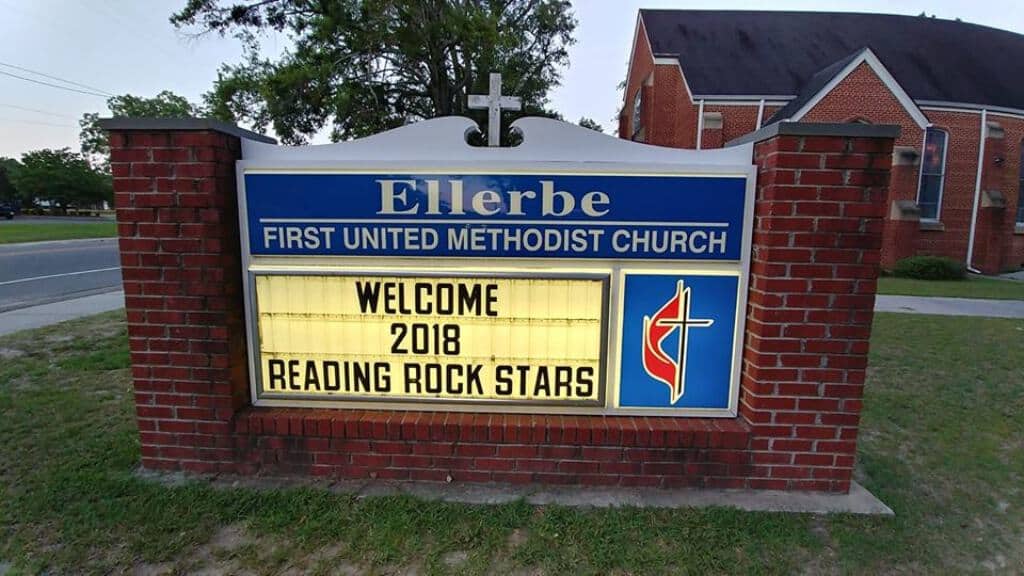
Relationship building
After confirming their values are aligned, partners must do the work of relationship building.
Around the peak of the pandemic, leaders at Central Carolina Community College (CCCC) started brainstorming creative ways to reach adult learners, which are students older than 25. Many of the ideas the college had tried up to that point just weren’t moving the needle.
“I wanted to have the college engage with them because it was valuable for them,” said CCCC President Dr. Lisa Chapman. “But I really didn’t have the trust of anybody outside the people I continued to talk to every single day. And so we needed to go beyond that.”
That’s when she had an idea — engaging with local faith leaders to engage adult learners. Chapman knew how important religion can be for people of faith, and she had read studies showing the special relationship many people have with their clergy.
Soon into the college’s efforts, they met Bishop Charles Mellette, founder and senior pastor of Christian Provision Ministries, a multicultural church in Sanford.
Along with Sanford city council member Byron Buckels, Mellette helped the college brainstorm ways to engage more adult students. The two Black leaders worked on the Sanford Equity Task Force, which presented a 46-page report to Sanford’s city council in November 2021.
“This same gap that the college was seeing, we were seeing those same gaps in the community,” Mellette said. “… There have been some relationship challenges between academia and the community.”
Once college leadership acknowledged that their relationship with Black communities could have been better in the past, Mellette said it helped establish trust for him and other leaders. At that point, they could work to move forward together. In January 2021, Mellette and Buckels met with CCCC, along with about 50 other Black faith leaders, to learn about the manufacturing jobs coming to the region.
One of the first big results of the collaboration was a back-to-school event in August 2022, which brought together hundreds of people for hot dogs, snow cones, book bags and supplies, voter registration forms, dental care kits, and connections to CCCC’s short-term training programs. The college funded the event through its N.C. Reconnect funds to engage adult learners.
“I have members of my congregation who were not qualified for some of the jobs that are coming, that have now gone through the programs there at the college,” Mellette said at the time. “Now they are qualified to be employed at some jobs where they’ll make more money than they ever have in their life.”
Last summer, the partnership hosted its third back-to-school event, which was hosted on the college’s campus and was the largest event yet. Local churches are also sharing information with congregants about opportunities at CCCC, along with ways to get connected to learn more. The college has also connected with clergy at Spanish-speaking churches in an effort to reach Latino students.
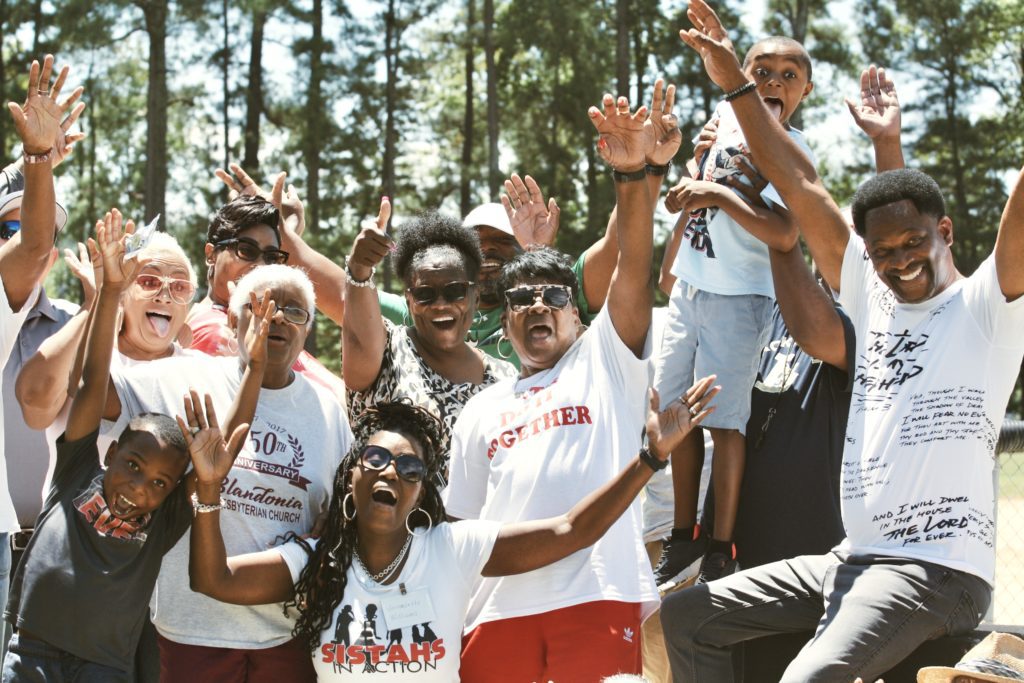
Importantly, Mellette said, his relationship with CCCC leadership has also grown over the last three years.
“I’m happy to say from where we are as partners together and even as a community leader, that the relationship in itself has progressed not only in conversation, but it has progressed in presence,” he said. “But actually to be seen and not only just heard, and I think that’s been a big difference.”
Chapman said building effective partnerships takes time, from both sides, and a lot of work.
People have to be in this for the long haul. So if somebody just says, ‘Well, engage your faith-based leaders,’ and they go visit and then check the box that they’ve visited — it is the relationship building. And that takes time because it involves trust and understanding and listening on everybody’s part.
CCCC President Dr. Lisa Chapman
Together with faith and college leaders, Mellette said the group has taken to not only calling themselves a team, but a family.
It’s not a label leaders take lightly, he said.
“We just actually have chosen to believe that that’s what we are,” Mellette said. “Because we’re in this as a family to help build and strengthen what we have, and I think this process has afforded us an opportunity to have some very courageous conversations.”
The people heading the partnership are also crucial, according to CCCC’s Meghan Brown.
Without someone like Mellette, she said CCCC may have never won the trust of other faith leaders, much less their communities.
“You have to have a leader in the faith-based community who is committed to the work,” she said. “And then Dr. Chapman has certainly been just kind of the spirit at the college saying this is important, and then showing it as an important.”
As organizations work to build relationships, Temple Emanuel’s Andy Koren said it is beneficial to convene widely and deeply.
If you are not a convener in your community, he said one of your first tasks should be finding that convener — someone like Mellette in CCCC. For schools, finding the local clergy association can be a good place to start.
Across various lines of religious difference, Koren said the vast majority of the state’s students are still educated through public schools.
“To that extent, the stronger that public education is, the better we all are because it’s about the common good,” he said. “And therefore, it behooves me as a religious leader, to know not only other religious leaders, but also civic, education, and business leaders in our area, and to work together. We’re at our best when we work, not as an island, but as a connected network.”
Moving from charity to justice
As school and places of worship alike think about education-based partnerships, they should dream big, the N.C. Council of Churches’ John Parker said. Specifically, Parker said, organizations should strive toward justice-based work, rather than stopping at charity.
“In all communities there are roles for charity. However, sometimes the works of charity are transactional or toxic and not transformative,” he said. “Many times charity doesn’t build peer-to-peer working relationships and creates distance between the giver and the receiver.”
Charity means giving aid to those in need, which can include raising money or school supplies, Parker said. Justice-based work, he said, imagines a world where needs are fulfilled, and then people partner to get there together.
For churches, he said justice work could look like leveraging their commercial kitchen to strengthen community food projects and cooking classes. It could also look like sharing land for gardening initiatives, an educational nature trail, or outdoor recreation.
Sometimes, such partnerships might require changing existing rules and policies, or creating new ones. Working to increase funding for new afterschool programs, for example, could uncover a need for civic engagement and restorative alternatives to punitive consequences for students, he said.
“How do our partnerships affirm the dignity, worth, and unrealized potential of those involved and who the partnership serves?” Parker said. “In the end, I believe our hardest work is to truly understand one another, to authentically care for one another, and to work together to discover our own abilities to create and be the beloved community we hope to see in the world.”
Not reinventing the wheel
Finally, Parker said, neither schools nor community organizations should reinvent the wheel when it comes to serving students.
When looking to help students and families, organizations should always start by looking to partner with groups that are already doing the work in their community. Parker listed examples of statewide/national organizations with local chapters, like Communities in Schools, the Boys and Girls Club, and the Congregations for Children (C4C).
C4C is a statewide initiative of the United Methodist Church that works to help improve K-3 literacy, make sure that students have their basic needs met, and increase the involvement of parents in schools.
“Now across the state of North Carolina, where we have 2,000 churches from the coast to the mountains, we partner with public schools in communities,” Hope Morgan Ward, then-bishop of the North Carolina Conference of the United Methodist Church, told EdNC in 2017. “And we do that by simply walking across the street and talking with principals and asking them how we can be helpful. How we can assist them?”
CCCC’s Meghan Brown said community partnerships are a crucial part of serving more of the community. In addition to community partnerships helping elevate best practices, Brown said relying on community partners can also help mitigate any limitations individual organizations face.
“One of the things we would love funding for is a community engagement person who could wake up every day and think about that, but the community college is not funded to have that type of position,” Brown said. “So I would say that’s one of the challenges, is having the infrastructure support to get it moving, and keep it moving.”
Chapman said the college is exploring the possibility of joint positions, which would share funding and impact between the college and another organization.
Despite any challenges to the work, Brown said that the mission alignment between the college and many faith groups makes all the work to engage worth it. Already, she said, the college’s faith-based engagement is leading to meaningful conversations about reentry after prison, transportation, housing insecurity, and more.
“If you think of any issue that’s pressing the community college right now, I talk to a faith-based organization, and they’re thinking about the same issues,” Brown said. “It’s just really remarkable to me that it seems like such a natural fit.”
Liabilities and logistics
Many places of worship worry about liability and other logistical challenges when it comes to education partnerships, Partners for Sacred Places’ DiLossi said.
“In terms of education, in terms of kids, particularly the younger they get, the more complicated it gets,” she said.
A lot of congregations she talks to don’t have all of the things needed in place to serve students when they first start talking about the idea, she said. Many buildings were build 50 or more years ago, for example, and don’t have elevators. Therefore many churches are not compliant with the Americans with Disabilities Act (ADA).
While churches can provide liability forms to any program participants, they should also think about how to make sure partnerships are both safe and successful. Other variables churches need to talk through before offering to partners include volunteer capacity, DiLossi said, and the ability to run background checks on volunteers before they work with children.
If offering building space, places of worship should also think about how to best organize the building flow to maximize space. Churches with child care or preschool, for example, need to separate young children from other areas of the church where other groups might be meeting to ensure student safety.
“We look at how the space is and what can be in there with the amenities and the tools and the environment that you have without making drastic changes in plumbing and electrical,” DiLossi said.
After talking through assets and limitations internally, DiLossi said churches must share information with potential partners.
“Limitations are easier to talk through if you have seen one another as a like-minded individual,” she said. “It’s a much easier conversation if you build that trust to start.”
Behind the Story
This story is a part of EdNC’s faith work. If you’d like to share your faith story with us, reach out to hmcclellan@ednc.org.
